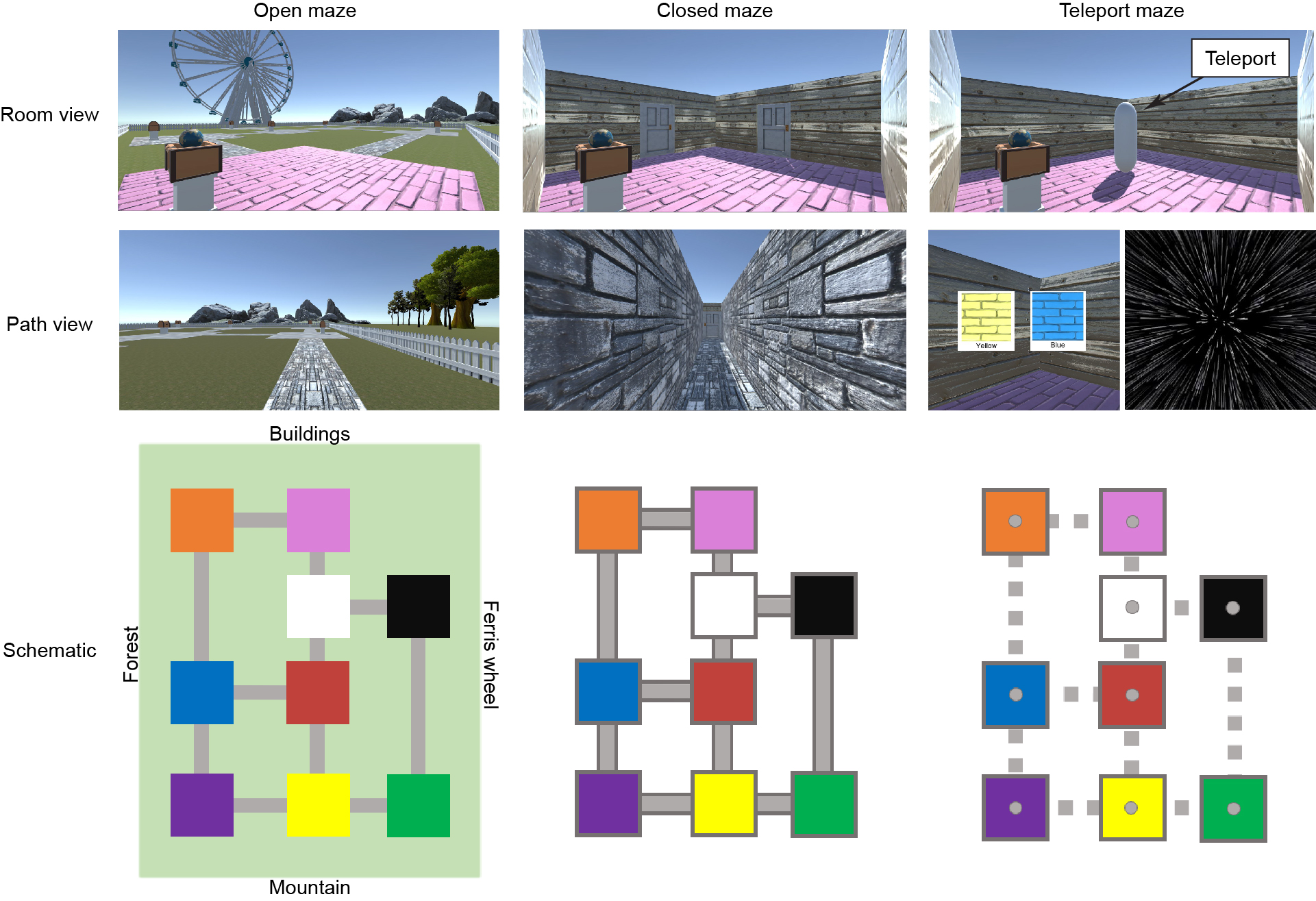The form of the cognitive map depends on the structure of the environment

Background & Questions
Previous research on how the brain represents space has often ignored the importance of one key element - the type of space being represented. In our research, we wanted to address how different environmental features affect the acquisition and coding of cognitive maps (individual “mental map” of a location in space).
Method
We created three virtual environments ranging from a large uniform space to a connected series of isolated rooms in virtual reality (VR). These environments went through multiple rounds of pilot testing. We assigned subjects to one of three environments for a between-groups study. Then we conducted behavioral experiments to assess one’s ability to construct accurate representations of spatial information (qualitative + quantitative research).
Important Findings
[redacted until manuscript release]
Impact
[redacted until manuscript release]
My Learnings
- Don’t be afraid to redesign your experiment if it’s not ideally suited for interpreting results. It can be fixed before final rounds of testing, but not after!
- Ask participants about their experience during initial testing rounds to improve your research methods.
Software/Tools: Microsoft Excel, Qualtrics, MATLAB, Unity3D, C#, R/RStudio
Analysis Techniques: Descriptive Statistics, T-test, ANOVA + derivatives, Chi-Square, Cluster Analysis
Detailed Summary: Humans and animals form cognitive maps that allow them to navigate through large-scale environments. Despite decades of research on these maps, a central question remains unclear: are these maps similar in nature across all environments, or are different kinds of maps formed in different kinds of environments? To investigate this, we examined spatial learning within three virtual environments: an open courtyard with patios connected by paths (open maze), a set of rooms connected by corridors (closed maze), and a set of isolated rooms connected only by teleporters (teleport maze). Importantly, all three environments shared the same topological graph structure. Post-learning tests showed that the environmental structure affected the accuracy, format, and variability of participants’ spatial representations. The open maze was the most accurately remembered, followed by the closed maze, and then the teleport maze. Both Euclidean and graph-like spatial codes were formed in the open and closed mazes, but participants’ navigational trajectories were more biased by graph knowledge (connectivity between rooms) in the closed maze compared to the open maze. Finally, performance in the open maze and teleport maze were relatively homogenous across participants, whereas performance in the closed maze exhibited greater individual variability. These results indicate that the structure of the environment strongly shapes the nature of the spatial representations that are formed within that environment, and that experimental findings obtained in any single environment may not generalize to others with different structure.
For more details about this project, please see our preprint posted on PsyArXiv.